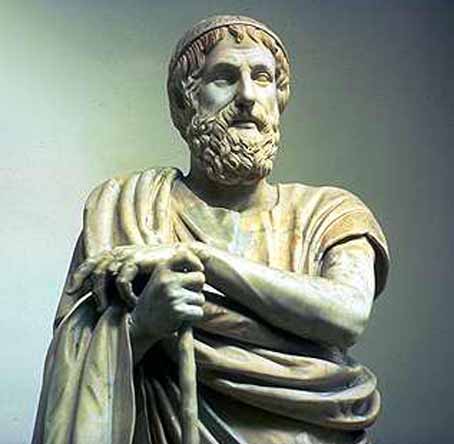
The Iliad and the Odyssey were Homer's first two great works of art. Homer could have written these poems during the dark ages. The Iliad and the Odyssey are still used in just about every high school in America.
Homer's first two greatest works of art were the Iliad and the Odyssey. Homer is thought to have lived during the dark ages. However, his birthplace is not known for sure, due to the fact that several countries claim to have been his birthplace. It is very likely that he came from the western coast of Asia minor, from the Island of Chios (Snodgrass 15).
The Iliad is based on Troy's story. This poem retells man's struggle against fate in a bloody, morbid, gruesome mighty war. The Odyssey, however, is about fearless Odysseus, working against nature's mysterious forces. Homer portrays his view of life in both of these stories. His view of life was that it was dangerous, thrilling and glorious (Weigel 41). However, his view of death was very different from his view of life. He viewed death as a dismal state (Wiegal 41).
Homer's writings were very influential. Homer created the perfect example for epic poetry in the Western literature. These two poems are also believed two have played a very important part of a young Greek's education. To this day most high schools in America include the Iliad and the Odyssey in their curriculum.
The Iliad and the Odyssey were Homer's first two great works of art. These poems show his view of death and life (Snodgrass 15). His writings still influence us today. As a matter of fact, it is because of Homer's and Hesiod's writings that we even study the Greek religion.
Snodgrass, Mary Elen. Cliff's Notes on Greek Classics. Lincoln Nebraska: Cliff Notes,
1988.
Weigel, James. Cliff's Notes on Mythology. Lincoln Nebraska: Cliff Notes,
1973.




 There were three dynasties in the New Kingdom. The Middle Kingdom was the Eighteenth dynasty through the twentieth dynasty
There were three dynasties in the New Kingdom. The Middle Kingdom was the Eighteenth dynasty through the twentieth dynasty.
These dynasties lasted from 1550 through 1069BC.Ahmose was the first king of the eighteenth dynasty and the founder of the New Kingdom. He ruled from 1550 to 1526BC. His father was Tao II and his mother Queen Aahotep. He had one brother who's name was Kamos. His main wife was Ahmose-Nefretiri. He made the city of Thebes the capitol city. His achievements were driving out the Hyksos from Egypt, building temples and building pyramids. He died at about the age of thirty-five years. He was buried at Deir Abu el-Naga - Abydos.
The founder of the nineteenth dynasty was Ramesses the first. During his reign he moved the capitol city to Avaris. His main wife was Sit-Re. his successor was his son Seti I, whom was born of Queen Sit-Re. Ramesses the first reigned from 1292to 1290BC. After he died he was buried in the Valley of the Kings, but was later reburied in Deir el Bahri cache source.
Ramesses the second was also part of the New Kingdom. he was the father of more than one hundred children and had more than five wives. He was also known as Ramesses the Great. Interestingly enough he had red hair. This pharaoh ruled for more than ninety years (Shuter 36). Ramses II was buried in the Vally of the Kings when he died. Ramesses the second left behind more memorials than any of the other pharaohs before or after him (Meltzer 70).
Setnakht was the first pharaoh of the twentieth dynasty, which lasted from 1186 through 1069BC. This pharaoh had a very short reign of about three years. his son was Ramesses the third. Not much, however, is known about this pharaoh's background. Some egyptologists think that he was related to the nineteenth dynasty. This pharaoh, like many others, was buried in the Valley of the Kings in a tomb cut out of rock.
The end of the New Kingdom came when Invaders decided to take advantage of the Egyptians when their government was struggling. The Egyptian government was struggling because when they moved their capitol to Akenton there was a struggle for power involving the government officials. This struggle made Egypt break into smaller states, which made it weak. Then the invaders came in and took Egypt source.
The New Kingdom was made up of three dynasties. These dynasties were the eighteenth dynasty, the nineteenth dynasty and twentieth dynasty. The New Kingdom lasted from 1550BC until 1069BC when it met a tragic end.
Meltzer, Milton. In the Days of the Pharaohs: A Look at Ancient Egypt.
New York: Library of Congress, 2001.
Shuter, Jane. People Who Made History in Ancient Egypt.
Austen TX: Steck-Vaughn, 2001.

